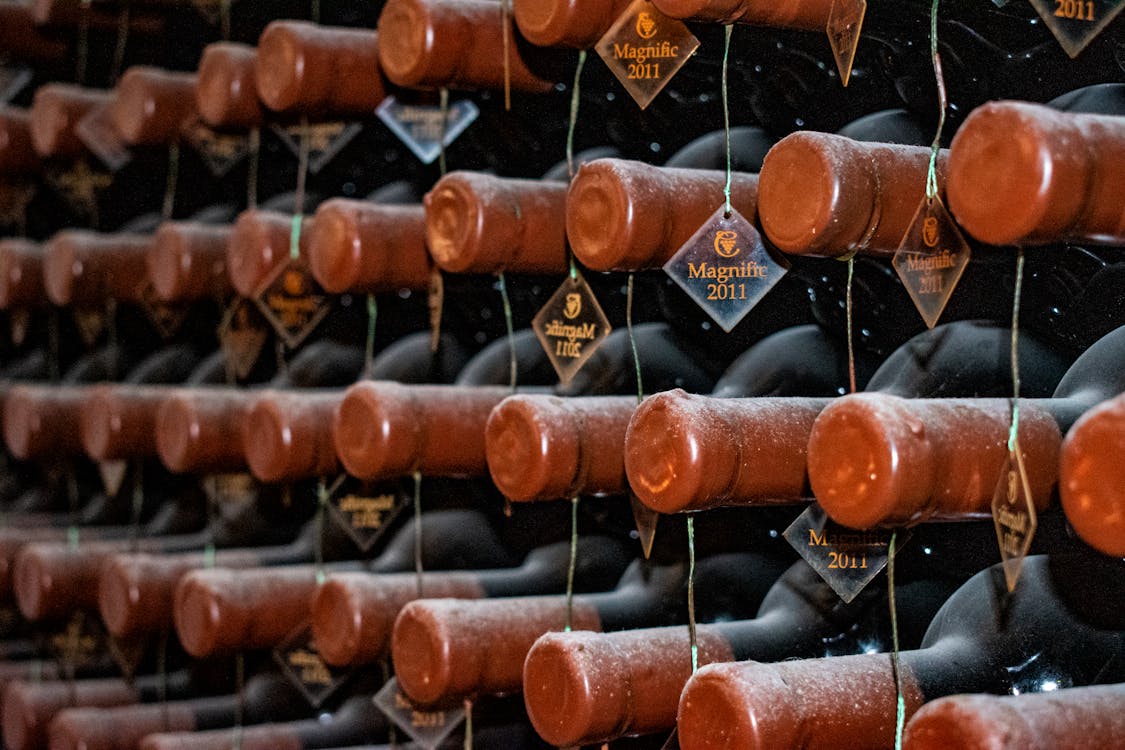The Mediterranean Sea runs along most of the southern half of Europe. Its western boundary is marked by the Alps, while its eastern side follows the coastline of Africa’s continent. The north border of Italy is bordered with France.
The northern part of Italy is called Piedmont, which means “foot-hill” in Latin. Most of Tuscany is located on the coast of Tyrrhenian sea. The city of Florence lies in the centre of this region. There are four main parts that make up Tuscan countryside: Maremma, Chianti, Lunigiana and Val d’Etna.
Tuscan landscape has a mixture of mountains, valleys, plains, hills, woods and lakes. The land is mostly flat but there are steep slopes on Mount Amiata near Alba. In fact, one of the highest peaks rises to 2,05m above the level of the surrounding area.


What Is Wine
Wine, a fermented grape juice drink has become a global phenomenon.
Today there are hundreds of brands of wine available and millions of people worldwide consume the beverage every day.
Although, not everyone knows what makes a good wine or what makes a bad wine. Some wines may seem perfectly drinkable, but are they?
Wine is like a complex art form that involves grapes, fermentation, aging and more. There are many different types of wine made today, some of which are dry and others that are sweeter.
Most wine begins its life as grapes, which are then crushed and allowed to ferment to become grape juice.
The grape juice is then combined with yeast and allowed to ferment, producing alcohol and carbon dioxide. As the wine ages, some characteristics change as the wine continues to mature.
Some factors that change over time include the color and flavor of the wine, clarity of the wine and aroma of the wine.
Wine enthusiasts enjoy drinking their favorite wine, knowing they are receiving the benefits of aging and a longer shelf life, all while enjoying the beverage.
Why Is Wine Popular in Italy
Wine is a drink that was originally invented by the ancient Greeks. However, most of the world’s population does not like this type of beverage. This is why you might be surprised to learn that the Italians have made it their national drink.
You might ask yourself how the Italian culture came to prefer wine. Well, there are many reasons. For example, the Romans used to believe that wine helped them live longer.
In addition, the Italians also believed that drinking wine would help prevent diseases.
Still another reason for the popularity of wine in Italy is the fact that it helps people relax. When you’re stressed out, you need to take a break from work and other activities.
However, you can’t always go out and get drunk. So, you’ll need to find some way to unwind. One good option is to try to enjoy a glass of red or white wine while watching television.
Another reason for the popularity of wine in Italy is the belief that it improves one’s mood. In fact, the Italian government has even encouraged its citizens to consume more wine.
If you want to learn about the different regions of Italy, then you should read on to discover why wine is so popular in this country.


Popular Wine Regions of Italy
With wine being an essential part of Italian cuisine, learning about where to drink in Italy can be an easy step towards discovering a different culture. In fact, with such an important role, it’s not surprising that many of the country’s best wines come from its winemaking regions. This article will provide an overview of some of the best wine regions in Italy.
There are two main wine-growing areas within the borders of Italy. One is the north, including Trentino-Alto Adige/Südtirol (where is produced the classic wine Spitz), Piedmont, Veneto and Friuli Venezia Giulia (where the reds are called Amarone, Dolcetto, Merlot and Pinot Noir). The other is the south, made up of Umbria, Marche, Abruzzo, Molise, Puglia and Campania. The southern region produces mainly white wines from Trebbiano, Malvasia Bianca and Verdicchio. It also includes the islands of Ischia, Capri, Lampedusa, Pantelleria, Elba, Procida, Ustica, Isola del Giglio and Isola d’Elba.
When choosing the wine regions of Italy, consider the following factors:
• Quality and diversity
• Climate and altitude
• Terroir (the characteristics of the soil and the landscape)
• Tradition and history
• Accessibility and convenience
Let’s take a closer look at some of these wine regions.
Cinque Terre
This area is part of the Langhe zone, which was established in 1989. Its name refers to five provinces, among which Cuneo, Asti, Monferrato, Alessandria and Biella. The area boasts a mild climate and many vineyards. As a result, the wines here are generally full-bodied. The dominant grape varieties are Nebbiolo, Moscato and Barbera, with Sangiovese often blended in. Winemakers in the region produce sparkling wines under the names of Asti Spumante and Asti Natural.
The Region of Alto Adige/Sudtiero
The area is known for the production of wine using the local grape variety, Tazzelen. The name Alto Adige (higher Austria) was officially adopted in 1816 after it was annexed by Austria. Alto Adige has a temperate, continental climate with an average temperature of about 10°C in January, although during the summer months temperatures rise to 20°C. Winemakers in this region produce mainly sparkling wine under the brand name Spumante d’Asti, which is considered one of the best.
Monferrato
This wine region is situated in Piedmont, the largest province of Italy. It has been producing wine since the 8th century. Monferrato includes the communes of: Monferrato, Casale Monferrato.


Some Varieties of Wines From Italy
A great way to see the variety of wine produced in the Italian region you’re visiting is to simply buy a bottle from any winery or vineyard. You may find your own preferences change as you sample different varieties from different places.
Here are the types of wines you may encounter in Italy:
Pinot Grigio: This crisp white wine comes from Friuli-Venezia Giulia in Northern Italy. It has an aroma of apricots, oranges, and sometimes honey. It pairs well with seafood, salads, chicken, and Asian dishes.
Carnaroli: Also called “pasta wine,” Carnaroli is a dry red wine from Veneto in Northern Italy. It can be smooth and light or have a slight tannin kick. It pairs with hearty, starchy foods such as pizza and pasta.
Chianti: This full-bodied red wine originates from the Tuscany region of Italy. Chianti wines tend to be fruity and floral, with a deep plum flavor. They pair well with pasta dishes, meats, and strong cheeses.
Granite: This is one of the most versatile Italian wines. Granite can range from light and fruity to slightly dry and robust. It can be enjoyed alone or with food. It is also known as Spumante because of its bubbles.
Fiano: Fiano is also known as “sweet wine.” Like Pinot Grigio, it is produced in Friuli-Venezia Giulia in Northern Italy. However, it has a stronger aroma of citrus and some spice.
Soave: This is another sweet wine that is produced in the Veneto region. It is similar to Fiano but is slightly less complex. Soave can be a little too sweet for some tastes, however, and isn’t known for its longevity.
Amarone: This is a strong dry white wine from Valpolicella in Northern Italy. It is made by mixing several different grapes. Amarone can range from slightly sweet to quite dry and robust.
Valpolicella Ripasso: Ripasso, which is often written as “Ripasso,” is a red wine that has been aged in wooden barrels. Valpolicella Ripasso is a specific variety of this wine that includes a blend of grape varieties from two different vintages.
Vino di Caparzo: Vino di Caparzo is a traditional method of wine making that involves fermenting grapes on the skins rather than in oak barrels. It produces a lighter and sweeter style of wine. The grapes are often left to ferment in large wooden baskets until they achieve a proper sugar level, then they are pressed and bottled.
Vino della casa: Vineyards in this region use this method for small batches of wine to create special offerings. The vino della casa is typically more expensive and produced in smaller quantities than other methods.




